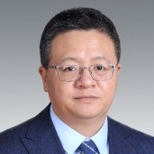Cytoskeleton and Molecular Motors
A special issue of Life (ISSN 2075-1729). This special issue belongs to the section "Cell Biology and Tissue Engineering".
Deadline for manuscript submissions: closed (30 May 2022) | Viewed by 3742
Special Issue Editors
Interests: actin; cytoskeleton; enzyme regulation; intracellular trafficking; molecular motor; muscle; myosin
Interests: major sperm protein; cell polarity establishment; vesicle trafficking; spermatogenesis; spermiogenesis; cell migration; C. elegans
Special Issue Information
Dear Colleagues,
The cytoskeleton consists of three types of protein filaments: actin, microtubule, and intermediate filaments. Each filament interacts with a large number of accessory proteins. One type of accessory proteins is molecular motor, including the microtubule-based motors dynein and kinesin, and actin-based motor myosin. By harnessing the energy from ATP hydrolysis, molecular motors are able to generate force and move along the cytoskeleton track unidirectionally. Cytoskeleton and molecular motors are essential for many cellular activities, including cell movement (motility), cell division, intracellular trafficking, and signaling transduction. While the basic structure and function of cytoskeleton are fairly well understood, as are the basic components and the dynamics of cytoskeleton, many novel functions of cytoskeleton are revealed recently. Myosin and kinesin each constitute a large superfamily with dozens of classes and only a few of them have been well studied so far. Investigation of cellular function and molecular regulation of molecular motors will provide key information on how the components within a cell move to the right place at the right time.
The present Special issue is aimed to gather the latest advances and outstanding research in the field of cytoskeleton and molecular motor. We invite research publications and review articles including, but not limited to, the following topics:
- The dynamics of cytoskeleton and the related cellular functions
- Signaling molecules and cytoskeleton
- Cytoskeleton-associated development disorders and diseases
- Structure and function of molecular motor proteins, including myosin, kinesin and dynein.
- Regulation of the motor functions of myosin, kinesin and dynein.
Prof. Dr. Xiangdong Li
Prof. Dr. Long Miao
Prof. Dr. Yun Xiang
Guest Editors
Manuscript Submission Information
Manuscripts should be submitted online at www.mdpi.com by registering and logging in to this website. Once you are registered, click here to go to the submission form. Manuscripts can be submitted until the deadline. All submissions that pass pre-check are peer-reviewed. Accepted papers will be published continuously in the journal (as soon as accepted) and will be listed together on the special issue website. Research articles, review articles as well as short communications are invited. For planned papers, a title and short abstract (about 250 words) can be sent to the Editorial Office for assessment.
Submitted manuscripts should not have been published previously, nor be under consideration for publication elsewhere (except conference proceedings papers). All manuscripts are thoroughly refereed through a single-blind peer-review process. A guide for authors and other relevant information for submission of manuscripts is available on the Instructions for Authors page. Life is an international peer-reviewed open access monthly journal published by MDPI.
Please visit the Instructions for Authors page before submitting a manuscript. The Article Processing Charge (APC) for publication in this open access journal is 2600 CHF (Swiss Francs). Submitted papers should be well formatted and use good English. Authors may use MDPI's English editing service prior to publication or during author revisions.
Keywords
- actin
- cytoskeleton
- dynein
- intracellular trafficking
- kinesin
- microtubule
- myosin
Benefits of Publishing in a Special Issue
- Ease of navigation: Grouping papers by topic helps scholars navigate broad scope journals more efficiently.
- Greater discoverability: Special Issues support the reach and impact of scientific research. Articles in Special Issues are more discoverable and cited more frequently.
- Expansion of research network: Special Issues facilitate connections among authors, fostering scientific collaborations.
- External promotion: Articles in Special Issues are often promoted through the journal's social media, increasing their visibility.
- Reprint: MDPI Books provides the opportunity to republish successful Special Issues in book format, both online and in print.
Further information on MDPI's Special Issue policies can be found here.








